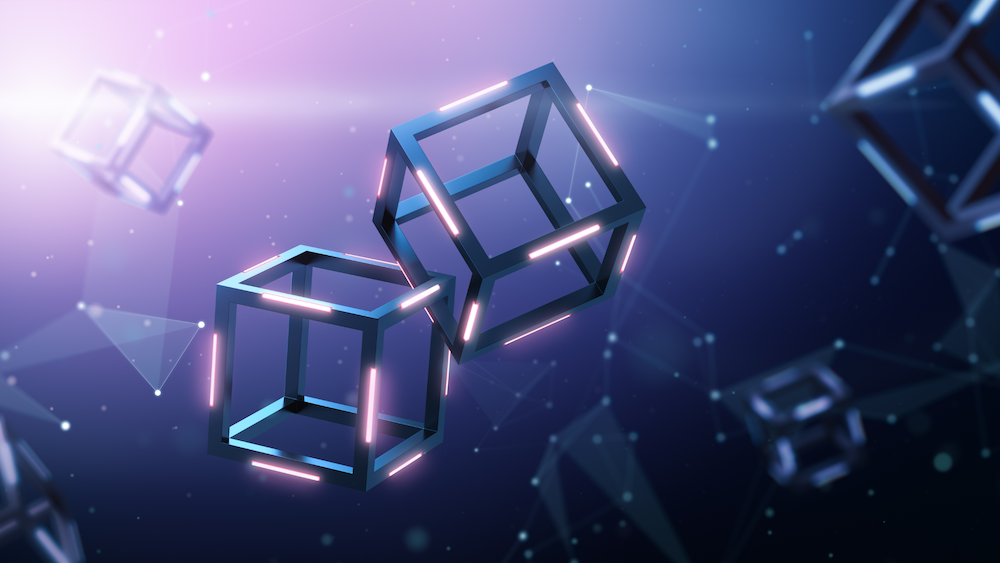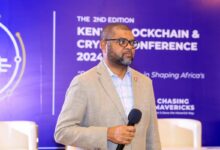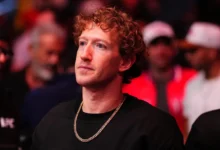How blockchain DAOS will revolutionize organisations governance and decision making

According to Alexandra Sims in a paper titled “Blockchain and Decentralized Autonomous Organisations (DAOs): the evolution of companies?”, the term “DAO” was first used in 2013, although the term Decentralised Autonomous Corporation (DAC) was used. Bitcoin was used as an example of a DAO, albeit a limited one.
This new entity generates revenue and pays people in cryptocurrency to provide it with resources and services— the cryptocurrency is in effect shares in the entity. The resources and services include computer storage; transaction validation and security against double spend attacks.
Notwithstanding the original conception of a DAO as a fully autonomous entity, people began to think about using such a vehicle for coordinating peoples’ activities rather than as an entity devoid of human decision-making.
In his paper, Sims notes that in 2016 an entity somewhat unfortunately named, “The DAO”, was created. The DAO was an automated investment fund set up on the Ethereum blockchain.
He says that people transferred the cryptocurrency ether to the DAO and in return, they were to receive DAO tokens. In turn proposals for projects would be submitted to the DAO. Token holders would vote on whether to fund those projects and the projects that were approved would be funded and profits remitted to The DAO and distributed to the DAO token holders.
However, he says human involvement in The DAO was limited to the following: a group of curators checked the identity of people submitting proposals and DAO token holders would vote on which proposals to fund. No managers or a board of directors were necessary: the token holders would vote on which projects to fund.
DAO MODEL
Business and other structures which people use to organize comprise many forms, including partnerships, trusts, co-operatives, companies, unincorporated and incorporated societies, charitable trusts, as well as others. DAOs also cover a wide variety of forms and can be for-profit, or not-for-profit, therefore, there is no model DAO as such. DAOs are also very early in their evolution. To add to the complexity, some organisations that use the term “DAO” are not yet operating as DAOs and instead intend to transition to a DAO and some are even currently constituted as a company. For example, Databroker DAO has stated that:
“Though the community has learned a lot since initial DAO governance experiments, there is still a long way to go. Especially since a lot of the partners in this ecosystem are more enterprise minded at this time. Since agility and flexibility are crucial in the early stages we decided that, since best practices and adoption of this model are still a moving target, Databroker DAO will be run using a traditional company structure, until such a time we, in active collaboration with the community and industry, can determine a governance model that works for all parties involved.”
What then are the features of a DAO beyond the use of smart contracts? One feature is that the DAO token holders propose and make all the decisions and no one person or entity has a controlling number of tokens. It is not necessarily the case that all token holders have a right to vote, however. In Dash, as we will see below, only masternodes are able to vote, albeit anyone can become a masternode if they hold 1000 dash. The decision-making includes not only changes to the rules of how the DAO operates, i.e. governance decisions, but also who and what work the DAO funds. In addition, there is no small group that decides which proposals the token holders vote upon. Rather token holders propose a change to the DAO’s rules or propose that they do work that the DAO pays for. There is also no pre-vetting or barriers put in the way of proposals, albeit, it is common to require payment with a proposal to prevent a flood of proposals.
Another feature of a DAO is that the decision-making occurs on-chain and is executed automatically. This means that first, the voting occurs on the blockchain, so it is visible to all. If the blockchain uses a public blockchain, anyone can view the voting, not just token holders. Second, once a proposal has been successfully voted upon, for example, for a change to be made to the DAO’s rules, that change occurs automatically, without the need for further human involvement.
Some DAOs, such as Dash which is looked at below, have just one type of token that performs a number of different functions. Such tokens serve as the DAO’s payment mechanism, represent an ownership interest in the DAO, and allow the holders to make proposals to the DAO as well as vote on proposals. Other DAOs have two types of coins, one used as the DAO’s payment mechanism and the other as a governance token, the holders of the latter token only are able to participate in voting. It is possible also for non-transferrable tokens to be issued based on the reputation a person gains in the DAO from the work they perform, which can be used to, for example, put forward a proposal. Other forms of tokens are possible as well.
Dash is an example of a DAO. Dash runs a blockchain, the purpose of which is to create and maintain a cryptocurrency that is used as a form of payment. As with Bitcoin, miners validate transactions. In Dash, the miners receive 45 percent of the block reward. Next are master nodes that perform other functions including sending transactions, for which they also receive 45 percent of the block reward. Decisions are made by master nodes and thus governance rests with them. Anyone can be a masternode if they stake 1,000 dash. The final 10 percent goes to the Treasury and is used to pay developers and others that contribute to the Dash ecosystem. Any holder of the dash can submit a proposal for funding. Crucially the Treasury does not receive the dash to distribute, nor does a person or group of people make the actual distribution, instead at the end of the voting cycle all the dash is distributed automatically to those with successful proposals.
HOW DAOS HELP IN TODAY’S ORGANIZATION MANAGEMENT
DAOs represent a radical rethink of how organisations, such as companies, can be structured and run, including changes in ownership, governance, decision-making, and profit distribution. DAOs not only lower transaction costs dramatically—and transaction costs are the very reason for a firm’s existence—through their use of smart contracts, they can prevent laws and other rules from being broken.
Companies can deploy blockchain to assist with record-keeping such as share ownership, transfers of shares, and the voting of shareholders. Such uses would be beneficial in terms of increased efficiency and transparency. Blockchain can also be used in a transformational way to create Decentralised Autonomous Organisations (DAOs). DAO, however, could not be registered as a company because it has, for example, no directors.
In contrast to the current way of people making decisions and taking actions, which may or may not comply with a company’s rules (its constitution and policies), people and also the DAO have no option but to comply. Our current systems can be likened to traditional board games and DAOs to computer games.
When playing Monopoly, it is common to argue over the rules and the players need to monitor each other to ensure the rules are followed. With a computer game, there is no ability to argue and no need for monitoring. If the ghosts in Pacman catch a player, that player is eaten.
Pacman’s computer code not only sets out the rules of the game it also enforces those rules. Thus, code can be seen as law. DAOs likewise implement code as law as they operate through a series of smart contracts, which are self-executing computer programmes. Traditional companies operate in the same paradigm as board games: rules, even when they are clear (which is not always the case), are not enforced automatically and many breaches go unnoticed. Even if the breach noticed, the harm has often been done.
For example, companies in New Zealand are not permitted to undertake various actions unless the board is satisfied on reasonable grounds that the company will, immediately after the action, satisfy the solvency test. By the time it is realized that the solvency test was not met the company is often in liquidation.
In contrast, a DAO’s assets and liabilities could be known in real-time and it would be unable to make certain payments and enter into transactions if the solvency test was not satisfied. It has been argued, therefore, that blockchain may help society “advance from a ‘don’t be evil’ world to a ‛can’t be evil’ world”. To be sure, there is justifiable concern that smart contracts cannot be coded ahead of time to deal with every eventuality. For the foreseeable future, dispute resolution will be a vital part of the operation of DAOs.
Instead of participants keeping separate ledgers which require checking and reconciliation, the participants in a blockchain have a copy of the same ledger, which is synchronised and updated in real-time. The data could relate to documents, such as health records, and information about the provenance of goods, the list is endless, or it could record the ownership of assets, whether they are cryptocurrencies, shares in companies, or land and other physical assets.
Blockchain is append-only: the entire transaction record can normally be seen for all time. The benefit of blockchain, with its append-only feature and distributed nature, means it is unlike a traditional database where changes to data can be made. While it is sometimes possible for a computer forensics investigator to reconstruct a database’s history, it is an expensive and time-consuming process.
Moreover, if a database is held on just one or a few computers if that database is corrupted or destroyed the information is lost unless there is an up-to-date backup. Even with a backup, there is a delay in restoring the data. Because a blockchain is stored on many different computers, the chances of destroying all the copies of a blockchain are remote. Paper documents too can be forged or change made to them. Again, while it is often possible for an expert to detect whether a document is genuine and has not had changes made to it, is a complicated and expensive process, and paper documents are relatively easy to lose or destroy, not to mention time-consuming to transport.
Tokenisation
Tokenisation is the act of converting rights over a physical or intangible asset into tokens, which are recorded on a blockchain. For example, take ownership of a patent. To be sure, New Zealand has a patent registry, however, there is no indefeasibility of title for patents, unlike with land, and the registered proprietor may not be the legal owner. It is possible, therefore, for B to obtain a license from the registered proprietor (C) only to find that C had assigned the patent to a third party (E). E as the legal owner could sue B for patent infringement. Time and cost are therefore baked into our current systems through the necessity of due diligence and the need to take out insurance to protect against claims of legal owners. If patents were tokenised the blockchain would provide for indefensibility of title: the person listed as the owner would be the owner. Such an asset registry would likely be run on a permissioned blockchain as it would be desirable for an entity to grant a patent in the first place, in New Zealand that entity would be the Intellectual Property Office of New Zealand (IPONZ). In addition, it would be necessary to have the ability to revoke the patent if a court held that it should not have been granted or transfer the ownership of the patent if the patent’s registered proprietor goes into liquidation.
Smart contracts
“Smart contracts” are not smart and they are not necessarily contracts, although they can be. Smart contracts are self-executing computer programmes and are placed on a blockchain that supports them: they “automatically and securely execute obligations when certain conditions are met”.58 In contrast to legal contracts, once the agreement has been reached and the smart contract is set in motion, no party can interfere and it will be executed without “interruption, deviation, or breach.”
A buyer and seller could agree to use a smart contract. The buyer sends the payment for the goods (in a cryptocurrency) to the smart contract, which holds the payment in escrow. The goods are dispatched with an IoT (internet of things) device and once that device is picked up by location tracking technologies at an agreed place and within a specified time, the payment is released from the smart contract and sent automatically to the seller. Should the goods not arrive on time the smart contract automatically returns the payment to the buyer. Another form of a smart contract would enable a company to engage in crowdfunding. The smart contract would hold the cryptocurrency in escrow. If the crowdfunding met the pre-set amount the cryptocurrency would be sent to the entity raising the funds. If the amount was not reached the cryptocurrency would be returned automatically to the putative investors. While people could be reimbursed in the latter example without the use of smart contracts, the transaction costs are high
“Pre-tech, we would have had to employ bank accounts, escrow agents, clerks and cheques, envelopes, and paper to manage all this. Even post-web we’d need a small army of programmers and interfaces into payment systems and websites.”
DAOs will use two main types of smart contracts. The first are for transactions, for example, a token holder sends DAO tokens to another person. The second are the rules of the DAO itself. While the first type of smart contract are designed to be executed without the ability of either party to interfere, the latter can and will be changed over time. An analogy can be made with the second type of smart contracts and a company’s constitution, albeit the constitution analogy only goes so far. The smart contracts that run the DAO are far more detailed than a company’s constitution and are more akin to a combination of a constitution and an operational manual. The limitation with constitutions and operation manuals is that they can be misinterpreted and are they are not always followed. In contrast, an action not permitted by the DAO’s smart contracts cannot occur. Another different between constitutions and smart contracts is that in New Zealand a company can be incorporated without a constitution. A DAO simply could not operate without a series of smart contracts.
Follow us on Telegram, Twitter, and Facebook, or subscribe to our weekly newsletter to ensure you don’t miss out on any future updates. Send tips to info@techtrendske.co.ke



